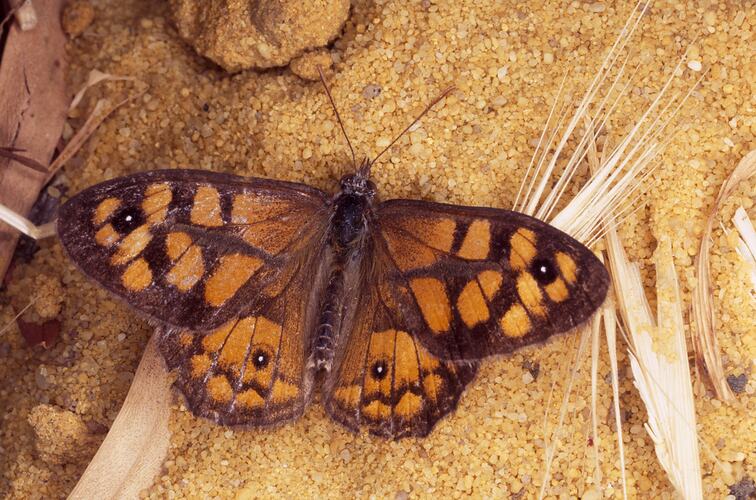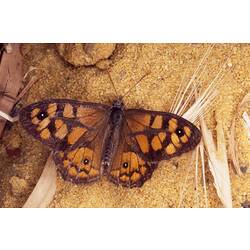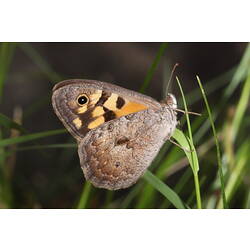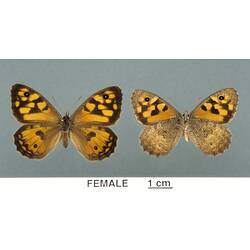General Description
Above: black with brown-orange markings and a white-centred black eyespot on the forewing; hindwing orange with black fringe, black central spot and small eyespot. Below: forewing as above, hindwing variable from grey to brown with darker markings. Hindwings without tails. Antennae clubbed. Wingspan up to 4 cm.
Biology
The butterflies are present from late spring to autumn. Males will go to hills and ridges and defend an area, with the aim of attracting females to mate with. The caterpillars are green and well camouflaged. They feed during winter and early spring on grasses, including Slender Tussock Grass Poa tenera and Kangaroo Grass Themeda triandra.
Distribution
Southern mainland Australia and Tasmania.
Habitat
Range of habitats including coastal, forested hills, and inland, drier regions.
More Information
-
Animal Type
-
Animal SubType
-
Brief Id
The name 'marbled' refers to the extensive brownish-orange markings on this butterfly's wings. The butterflies fly slowly, usually close to the ground.
-
Colours
Brown, Black, Yellow, Orange
-
Maximum Size
4 cm
-
Habitats
-
Diet
Nectar
-
Endemicity
-
Commercial
No
-
Conservation Statuses
CITES: Not listed, FFG Threatened List: Not listed, DSE Advisory List: Not listed, IUCN Red List: Not listed
-
Plants
Grasses
-
Flight Start
December
-
Flight End
April
-
Taxon Name
-
Scientific Author
(Guerin-Meneville, 1830)
-
Common Name
Marbled Xenica
-
Other Names
Klug's Xenica
-
Kingdom
-
Phylum
-
Subphylum
-
Class
-
Order
-
Family
-
Subfamily
-
Genus
-
Species Name
klugii





